Incorporating plants into smaller living spaces presents both challenges and opportunities for homeowners and apartment dwellers alike. Limited square footage, insufficient natural light, and the need to maintain uncluttered living areas can make the introduction of greenery seem daunting. However, with thoughtful selection and strategic placement, indoor plants can transform even the most compact spaces into lush, vibrant environments. The key lies in choosing the right plants and arrangements that not only adapt to the constraints of smaller spaces but also contribute to a more dynamic and enriched living environment.
Benefits of Indoor Plants for Small Home Environments
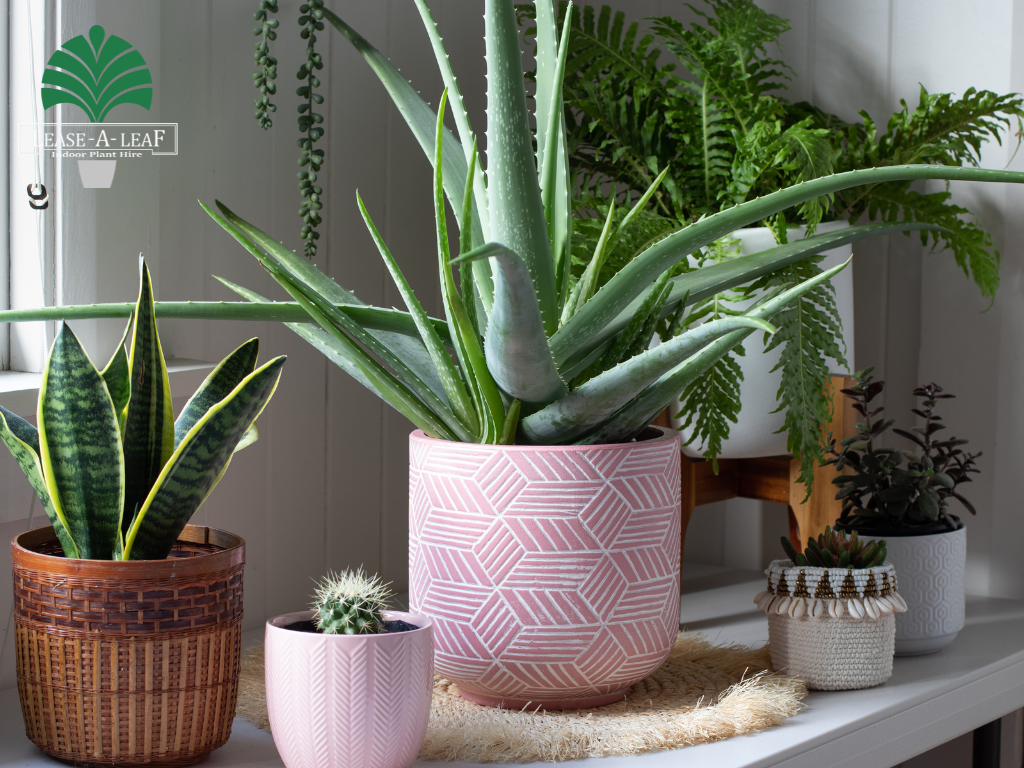
Psychological Advantages
The presence of indoor plants in small spaces can have a profound impact on mental health and well-being. Studies have shown that plants can improve mood, reduce stress, and increase feelings of happiness and calm. In the confined settings of small homes, where the opportunities for nature contact might be limited, plants serve as vital connections to the natural world, offering psychological benefits that enhance the quality of daily life.
Aesthetic Impact
Beyond their mental health benefits, indoor plants add depth, color, and texture to small areas, effectively enhancing the visual appeal of the space. indoor plant hire can serve as focal points, draw the eye upwards or across the room, and introduce variety in color and form. This added visual interest can make small spaces feel more dynamic, spacious, and connected to the outdoors, counteracting the potential for a cramped or monotonous interior.
Vertical Gardens: Maximizing Vertical Space
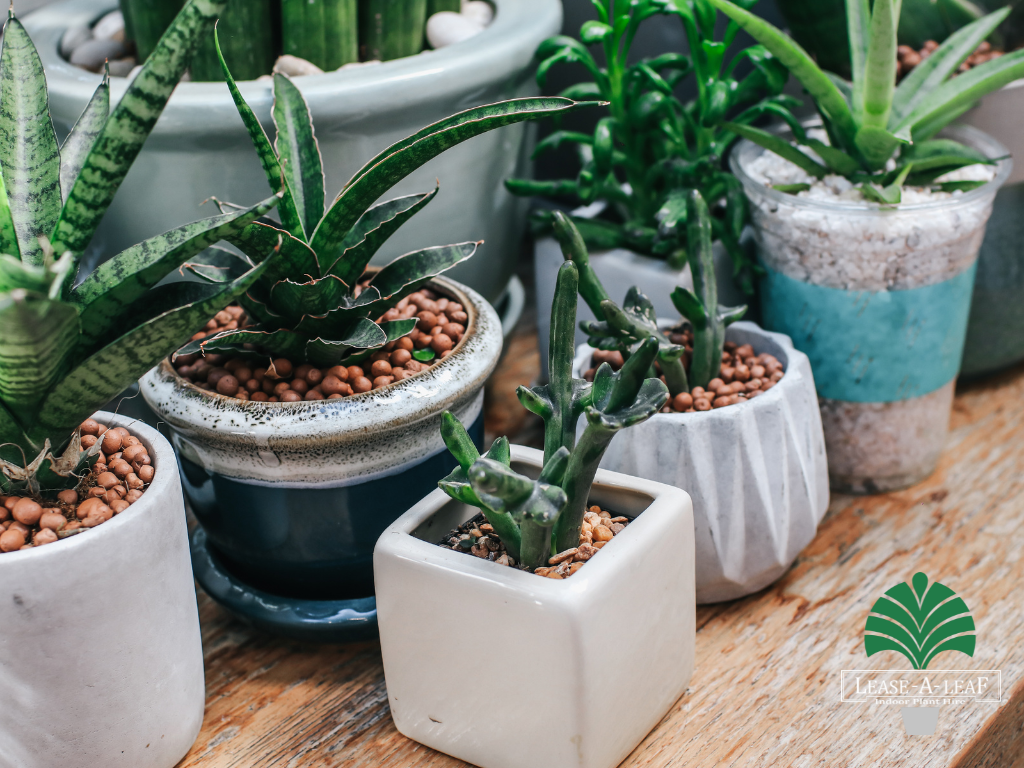
Concept of Vertical Gardening
Vertical gardening is an innovative solution to the challenge of limited floor space, making use of upward areas for plant display and growth. This approach involves arranging indoor plant hire on vertical surfaces, such as walls or hanging systems, to create living art pieces or green walls. Vertical gardens can accommodate a variety of plant species, from succulents and ferns to herbs and flowering plants, making them versatile additions to small homes.
Design Ideas and Installation Tips
Vertical gardening is an innovative solution to the challenge of limited floor space, making use of upward areas for indoor plant hire display and growth. This approach involves arranging plants on vertical surfaces, such as walls or hanging systems, to create living art pieces or green walls. Vertical gardens can accommodate a variety of plant species, from succulents and ferns to herbs and flowering plants, making them versatile additions to small homes.
Design Ideas and Installation Tips
Creating a vertical garden in a small home begins with selecting the right location and type of vertical support system. Wall-mounted planters, hanging pockets, and freestanding vertical units are popular options that can be adapted to various spaces and decor styles. Consider the following tips for successful vertical gardening:
- Light Requirements: Choose a spot with adequate natural light for the types of plants you wish to grow, or supplement with artificial grow lights if necessary.
- Watering Solutions: Opt for vertical gardening systems that include built-in watering or easy-to-water features to ensure plants receive consistent moisture without creating mess or water damage.
- Plant Selection: Select plants with similar light and water needs to simplify care. Consider the growth habits and mature sizes of plants to avoid overcrowding and ensure a visually pleasing arrangement.
- Installation Safety: Ensure that wall-mounted systems are securely attached to walls capable of supporting the weight of the plants and soil, especially when fully watered.
Hanging Plants: Creative Ceiling and Window Solutions
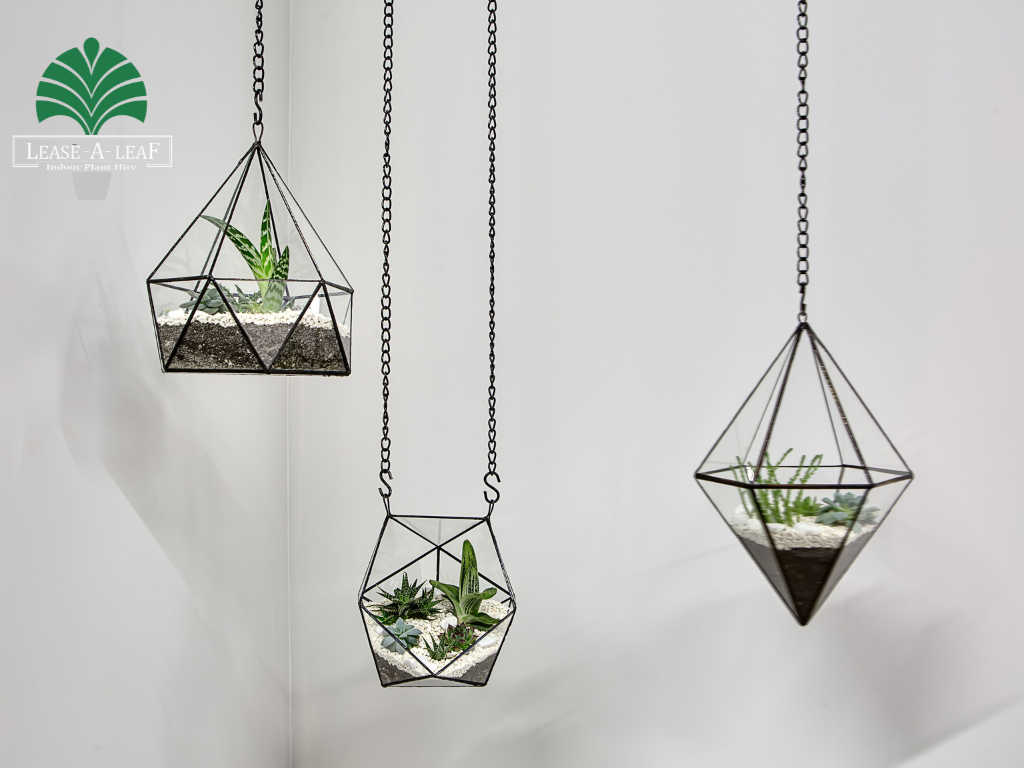
Choosing Hanging Plants
Selecting the right indoor plant hire for hanging baskets or containers is crucial to ensure they thrive and enhance the beauty of your space. Ideal candidates for hanging displays include:
- Pothos (Epipremnum aureum): Known for its hardy nature and trailing vines, pothos is adaptable to a variety of light conditions.
- Spider Plant (Chlorophytum comosum): Recognized for its air-purifying qualities and fast-growing spiderettes.
- String of Pearls (Senecio rowleyanus): Offers unique, bead-like leaves, perfect for adding texture and interest.
- Boston Fern (Nephrolepis exaltata): Provides lush, green fronds that thrive in humid conditions and indirect light.
Installation and Care
Securely installing hanging plants ensures their health and the safety of your space. Consider lightweight pots and secure hooks or ceiling mounts capable of supporting the weight. For care:
- Ensure consistent watering, keeping in mind that hanging plants may dry out faster due to increased air circulation around the pot.
- Regularly rotate the plant to ensure even growth and exposure to light.
- Prune as needed to manage plant size and encourage fuller growth.
Shelf and Counter Plant Decor
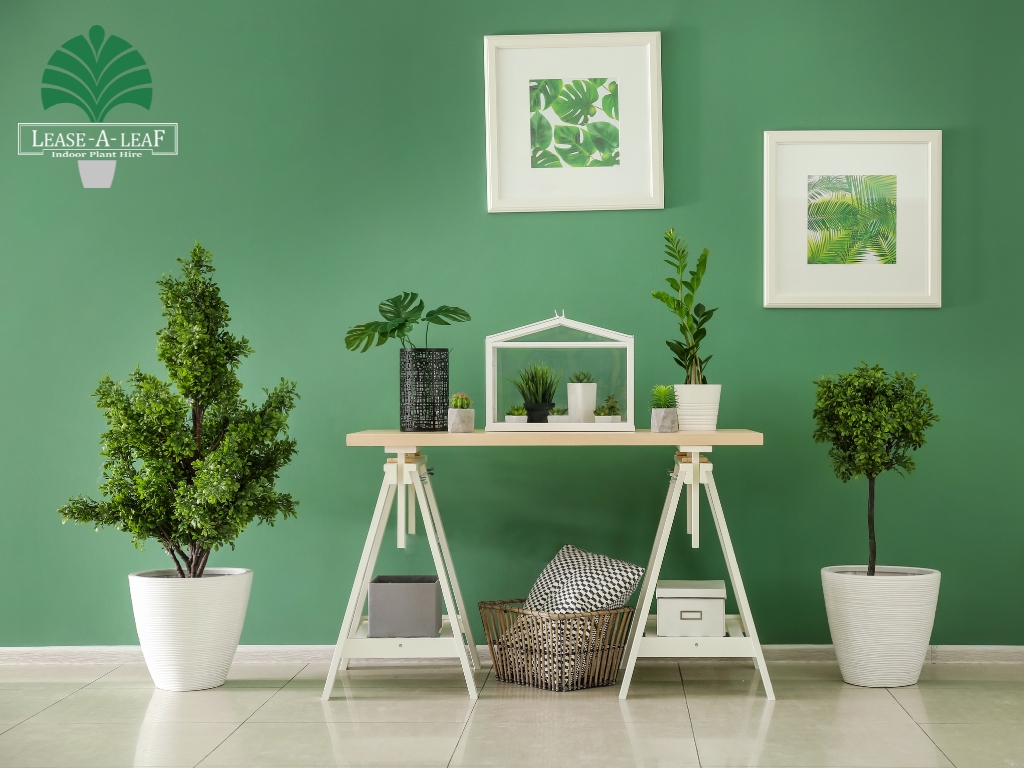
Strategic Placement for Small Spaces
Utilizing shelves, windowsills, and countertops for plant displays can significantly enhance a small space without contributing to clutter:
- Opt for plants with vertical growth or compact habits to maximize limited surface areas.
- Use varied pot heights and sizes to create visual interest and depth.
- Consider the light requirements of each plant when positioning them to ensure healthy growth.
Plant Selection for Shelf and Counter Decor
When choosing plants for shelf or counter decor, look for species that remain small or grow slowly:
- Succulents: Such as Echeveria and Haworthia, are perfect for sunny windowsills with their low water needs and compact size.
- Herbs: Like Basil and Mint, offer practicality and freshness to kitchen counters.
- African Violets (Saintpaulia): Provide a splash of color with their blooms and thrive under indirect light, suitable for shelves away from windows.
Custom Plant Selection for Small Spaces
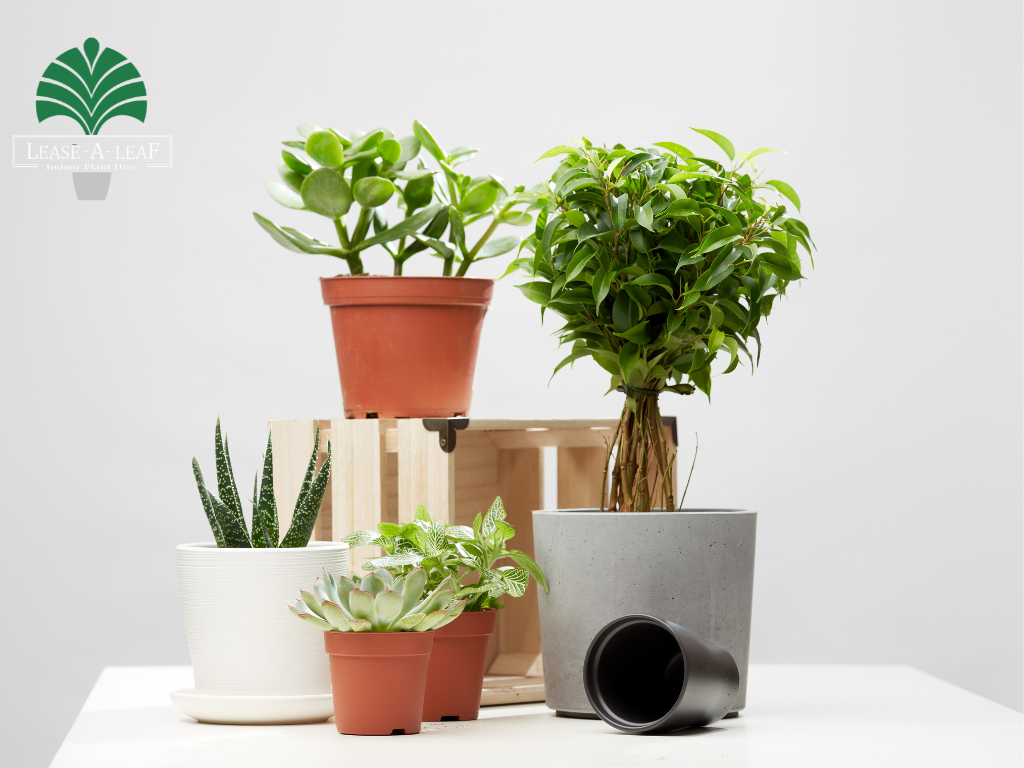
Understanding Plant Growth and Space Needs
Selecting plants for small spaces requires an understanding of their mature size, light, and water requirements. Avoid plants that grow too large for the intended space and consider the environmental conditions of your home, such as light levels, humidity, and temperature variations.
Top Plants for Small Indoor Spaces
A curated list of plants ideal for small homes focuses on low maintenance and aesthetic appeal:
- Peace Lily (Spathiphyllum): Offers elegant white blooms and thrives in low-light conditions, making it perfect for adding life to dimmer corners.
- ZZ Plant (Zamioculcas zamiifolia): Known for its drought tolerance and ability to thrive in low light, making it an ideal low-maintenance option.
- Air Plants (Tillandsia): Require no soil and minimal space, perfect for creative displays on shelves or in hanging glass terrariums.
Incorporating Plants into Multi-functional Furniture
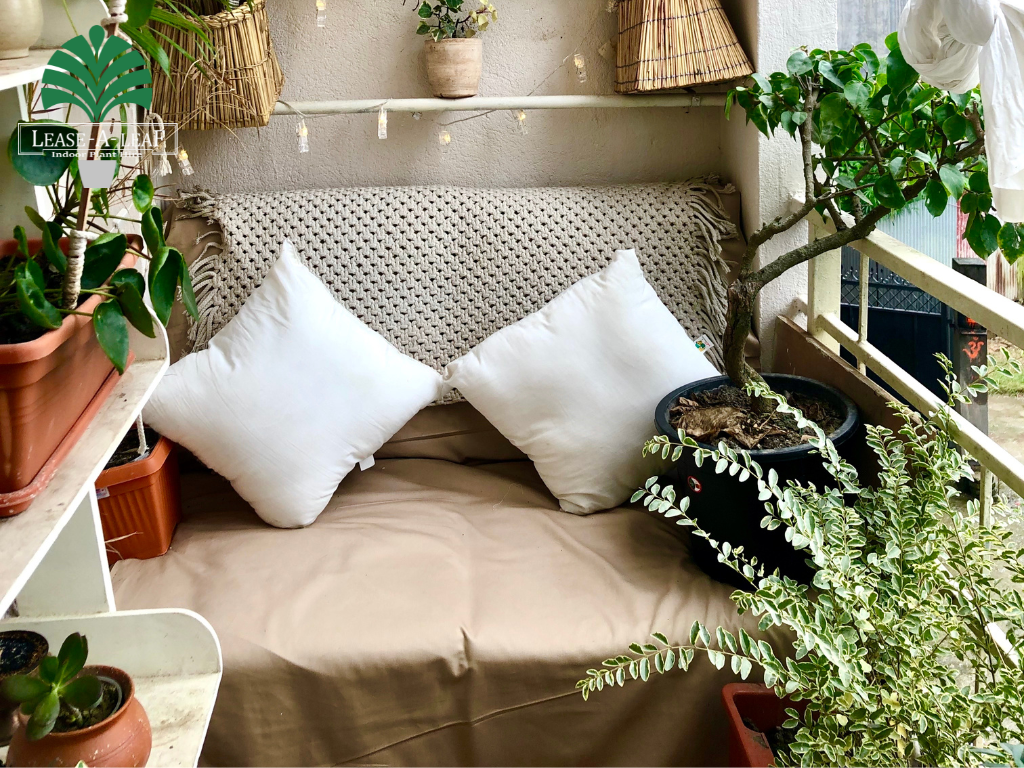
Furniture with Built-in Planters
Modern furniture design increasingly incorporates green elements, blending functionality with nature. Furniture pieces like coffee tables, bookshelves, and modular units now come with built-in planters, offering a seamless way to integrate greenery into the home. These innovative designs not only save space but also serve as living art pieces, adding a dynamic and organic touch to any room. Look for furniture that balances plant health needs, such as adequate soil depth and water drainage, with aesthetic appeal to ensure both your plants and your home look their best.
DIY Solutions
Creating your own plant-integrated furniture allows for customization and personal expression in home decor. Here are some ideas:
- Bookshelf Planters: Transform the ends of shelves or unused compartments into spaces for small pots, perfect for succulents or air plants.
- Tabletop Terrariums: Convert an old coffee table into a terrarium by adding a glass top and a shallow planting area beneath for a stunning display.
- Chair Plant Holders: Modify old chairs by removing the seat and replacing it with a planter box for an eye-catching garden chair.
Maintenance Tips for Indoor Plants in Small Spaces
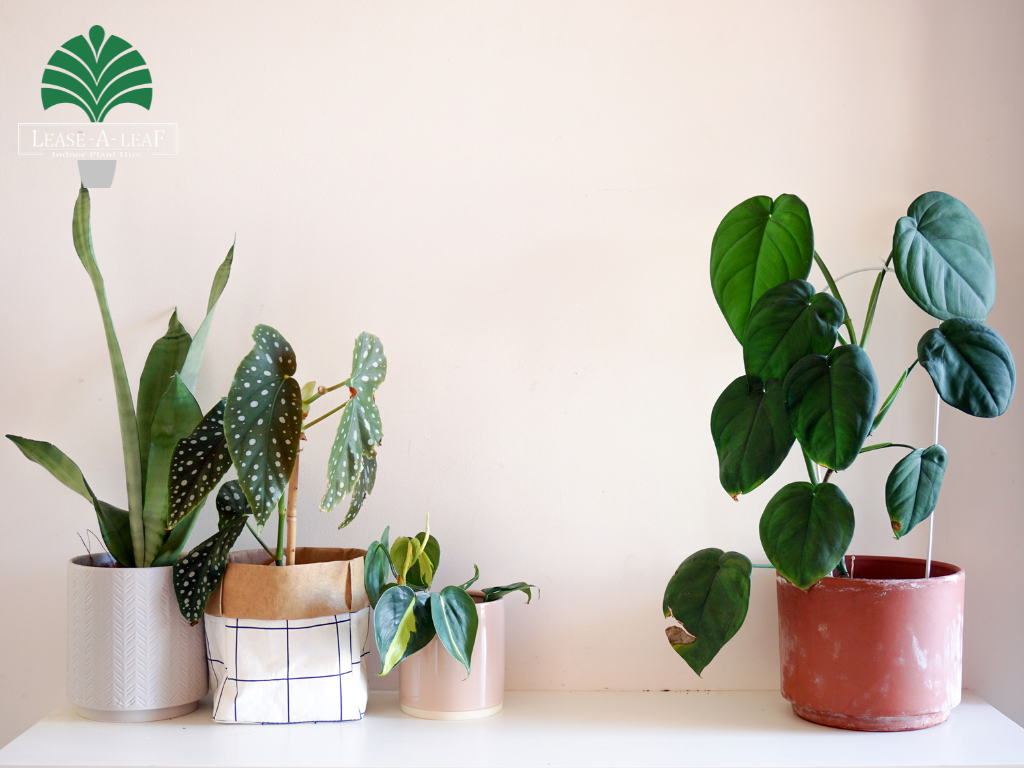
Watering and Fertilizing
Proper watering is crucial in confined spaces to prevent root rot and overwatering. Use pots with drainage holes and trays to catch excess water. Consider the plant’s specific water needs, adjusting for factors like air humidity and light levels. Fertilize sparingly, as plants in limited spaces and containers can quickly become over-fertilized, leading to nutrient burn. Opt for a balanced, slow-release fertilizer that provides a steady supply of nutrients.
Pruning and Grooming
Regular pruning and grooming help maintain the shape of plants, encourage healthy growth, and keep them within their allocated spaces. Remove dead or yellowing leaves to promote new growth and use clean, sharp scissors or pruners to cut back overgrown branches. This not only keeps plants looking tidy but also prevents them from overshadowing or infringing on each other’s space.
Overcoming Common Challenges
Dealing with Limited Light
For areas with insufficient natural light, consider plants that thrive in low-light conditions, such as pothos, snake plants, and ZZ plants. Alternatively, use grow lights to supplement natural light, positioning them strategically to provide your plants with the necessary lumens for photosynthesis without overwhelming your living space.
Ensuring Adequate Airflow
Good air circulation is essential for plant health, helping to prevent diseases like powdery mildew and pests. Avoid overcrowding plants and ensure that air can freely move around each plant. Use fans or open windows regularly to improve airflow, but avoid placing plants in direct paths of strong drafts.
Conclusion
Integrating plants into small living spaces through innovative furniture solutions and strategic plant care can transform even the most compact homes into lush, vibrant sanctuaries. These creative and practical approaches not only enhance the aesthetic appeal of your living environment but also contribute positively to your emotional and physical well-being. Embrace indoor gardening as a fulfilling way to connect with nature, personalize your space, and promote a healthier, more joyful home life.

